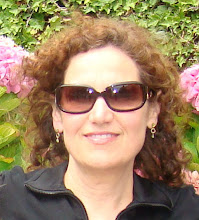


Hoi An – Day 1
Anyway, when we rolled into our five star hotel, the Palm Garden, on the beach in Hoi An, we felt like we had finally arrived. This place was gorgeous, with a gigantic, many environments pool with water at least body temperature. The grounds were beautiful, with sculpture and antique fishing boats used as planter boxes littered tastefully all around. Hoi An is famous for the silk clothing that can be custom made in 24 hours. After Joe dropped us off in old town and we finished dinner, I went across the street just to see what kinds of clothing all the talk was about. The young woman there said a wool gabardine suit, 2 piece, would be $70 US and a silk suit would be $85. Joe was returning soon and I did not think the prices would be any better, so I had her measure me. I picked out some “silk”, silk blend, fabric, and said I would be back for an initial fitting the next day. This was just the closest of many fabric shops. I might have gotten a better fit/fabric etc., if I had shopped a little, but…..
Hoi An – Day 2
Next day the plan was to bike back toward Da Nang, to visit the famous Marble Mountain. This is a large limestone karst, with caves, which has been used as a religious site for centuries. I was soaking wet from the heat of the ride, and there were many tourists already there when we arrived. At the foot of the mountain are dozens of marble statuary shops where they sculpt marble, no longer dug out of Marble Mountain. We climbed the tall carved steps up to the series of caverns which are now temples for various beautiful, ancient statues of Buddha in his various forms. Incense was burning, offerings were made, people were praying, and two French girls were rappelling down one of the faces onto one of the central areas where all this other activity was taking place.
We then took the van to look for Freedom Hill. I told them, as I recalled, it should have been a pretty straight shot inland from the air base, maybe 10km. We worked our way west, gaining altitude, and found a Vietnamese army base on one side of the road, a military cemetery on the other, and a huge digging (just for dirt) operation northeast of the cemetery. We asked around, and people were saying that indeed there had been a large American base up there. Looking down, I could see the lay of the land, some flat areas of rice that had not succumbed to urban sprawl that looked very familiar, down to a small, colorful pagoda that looked like one I had seen back then. As I said previously, Da Nang and Freedom Hill were not as meaningful to me as Bastogne, so I was not too disappointed that we could not find the exact spot where I used to sit and pick ticks off of the unfortunate dogs that wandered around the neighborhood of hootches.
As we descended back into town, we stopped for another hotpot and a few beers before heading back to the life of luxury. We told Joe that we were too full to eat another seven course meal that night, so not to bother coming back to pick us up for dinner.


